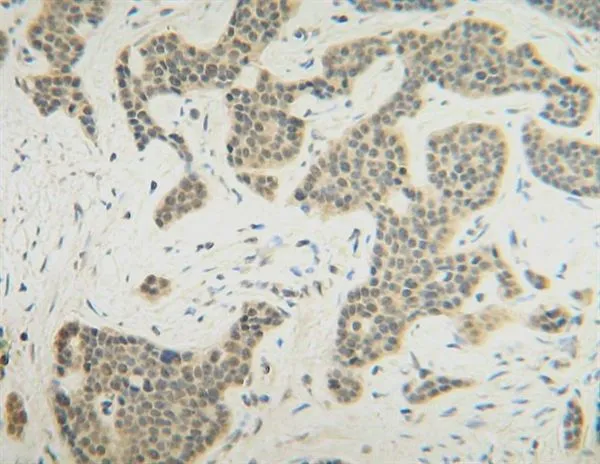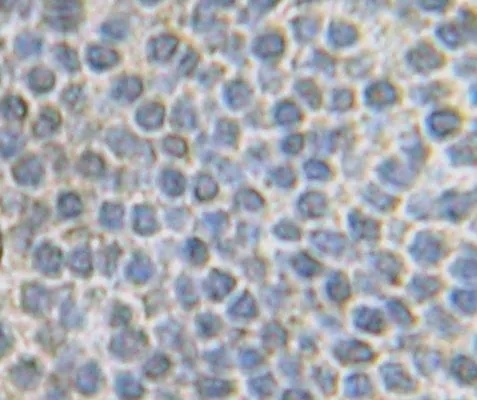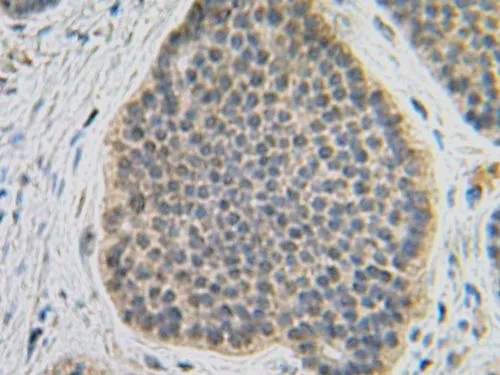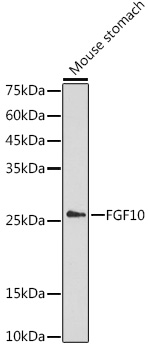
IHC-P analysis of human carcinoid tissue using GTX30007 FGF10 antibody. Antigen retrieval using citrate buffer at pH6.0.
FGF10 antibody
GTX30007
ApplicationsWestern Blot, ELISA, ImmunoHistoChemistry, ImmunoHistoChemistry Paraffin
Product group Antibodies
TargetFGF10
Overview
- SupplierGeneTex
- Product NameFGF10 antibody
- Delivery Days Customer9
- Application Supplier NoteWB: 0.1-0.2microg/ml. ELISA: 0.5-2microg/ml. *Optimal dilutions/concentrations should be determined by the researcher.Not tested in other applications.
- ApplicationsWestern Blot, ELISA, ImmunoHistoChemistry, ImmunoHistoChemistry Paraffin
- CertificationResearch Use Only
- ClonalityPolyclonal
- Concentration1 mg/ml
- ConjugateUnconjugated
- Gene ID2255
- Target nameFGF10
- Target descriptionfibroblast growth factor 10
- Target synonymsLADD3, fibroblast growth factor 10, FGF-10, keratinocyte growth factor 2, produced by fibroblasts of urinary bladder lamina propria
- HostGoat
- IsotypeIgG
- Protein IDO15520
- Protein NameFibroblast growth factor 10
- Scientific DescriptionThe protein encoded by this gene is a member of the fibroblast growth factor (FGF) family. FGF family members possess broad mitogenic and cell survival activities, and are involved in a variety of biological processes, including embryonic development, cell growth, morphogenesis, tissue repair, tumor growth and invasion. This protein exhibits mitogenic activity for keratinizing epidermal cells, but essentially no activity for fibroblasts, which is similar to the biological activity of FGF7. Studies of the mouse homolog of suggested that this gene is required for embryonic epidermal morphogenesis including brain development, lung morphogenesis, and initiation of lim bud formation. This gene is also implicated to be a primary factor in the process of wound healing. [provided by RefSeq, Jul 2008]
- Storage Instruction-20°C or -80°C,2°C to 8°C
- UNSPSC12352203
References
- Ciccimarra R, Bolognesi MM, Zoboli M, et al. The normal and fibrotic mouse lung classified by spatial proteomic analysis. Sci Rep. 2022,12(1):8742. doi: 10.1038/s41598-022-12738-9Read this paper






